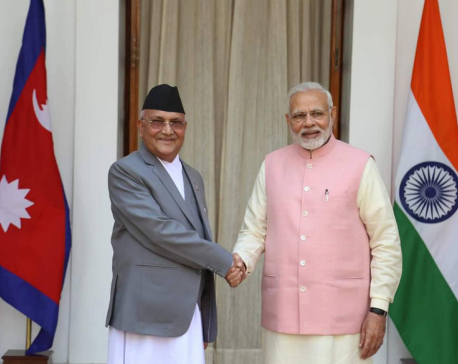
OR
Varicose vein becoming a burden as an occupational disease in Nepal
Published On: August 2, 2019 04:00 AM NPT By: Madhusudhan Guragain

BANEPA, Aug 2: The number of patients of varicose vein, which is rarely discussed, has been unbelievably increasing in the country in recent years. Records at the Vascular Department of Kathmandu University Teaching Hospital, Dhulikhel, prove this fact as the number of patients with varicose vein admitted in the ward per week has almost reached the count of 100.
In Varicose vein, veins under the skin of the legs become widened, bulged, and twisted. Swelling occurs when the venous valve that helps in pumping blood from legs to the heart stops working.Vascular surgeons say that in worse cases, it may completely damage the valve which should be surgically removed or through frequency of laser treatment. Experts have divided the disease into six different clinical stages and also the treatment application methods accordingly. In 1994, the international association of American Venous Forum divided its stages based on CEAP (clinical, etiological, anatomical, pathophysiological).
According to cardiothorasic and vascular surgeon Dr Rabinman karmacharya (KU), patient count suffering from varicose vein initial stage (C1 and C2) is very rare. But when the problem starts being critical, i.e. C3 stage, the patient count is extensive.
He said, “Among the patients suffering from varicose vein, 40 percent are C3 patients, 50 percent are C4 patients and the remaining 10 percent are of final stage (C5 and C6).”
“Till 2012, KU hospital was treating the patients through stripping surgery. About 60 patients have already undergone the varicose surgery. Since 2013, the hospital started successful and convenient treatment with the new Radiofrequency Ablation (RFA) method”, said Karmacharya, “In this method, frequency applied through blood veins acts as a microwave that burns away damaged portion.”
Even though medication and use of bandages may somewhat help the condition, there is need for surgery to treat it completely. According to Dr Karmacharya, “The modern RFA technique is much convenient as there are few post-surgery hospital days.”
Varicose vein is counted as an occupational health problem. “People who continuously stand over six hours, overweight pregnant women, those with constipation are under high risk of varicose vein. It can also be hereditary,” said Dr Karmacharya.
A study conducted by the International Journal of Vascular Surgery revealed that the problem has been seen in over 24 Nepali traffic police. Investigations also show that varicose vein is seen in elderly men and women above the age of 40.
Dr Karmacharya said that the disease can be treated in its initial stage, so, he suggests to patients to consult vascular surgeons as early as possible. “If the twisting of vein is persistent, it can produce other critical problems like internal bleeding, phlebitis and can also lead to venous ulcer. Ignorance of varicose vein is very dangerous,” said Dr Karmacharya.
You May Like This

Complete education, full health could double Nepal's GDP per capita: WB
KATHMANDU, June 7: Nepal has the potential to double its Gross Domestic Product (GDP) per capita in the long run if... Read More...

Heritage in danger
Threats to cultural heritage of Kathmandu Valley can be overcome only with an optimum level of international cooperation, greater public... Read More...

The Modi ripples
When two elephants make love, the Tibetans get squeezed out from India and, it will not be a matter of... Read More...










Just In
- NRB introduces cautiously flexible measures to address ongoing slowdown in various economic sectors
- Forced Covid-19 cremations: is it too late for redemption?
- NRB to provide collateral-free loans to foreign employment seekers
- NEB to publish Grade 12 results next week
- Body handover begins; Relatives remain dissatisfied with insurance, compensation amount
- NC defers its plan to join Koshi govt
- NRB to review microfinance loan interest rate
- 134 dead in floods and landslides since onset of monsoon this year








Leave A Comment